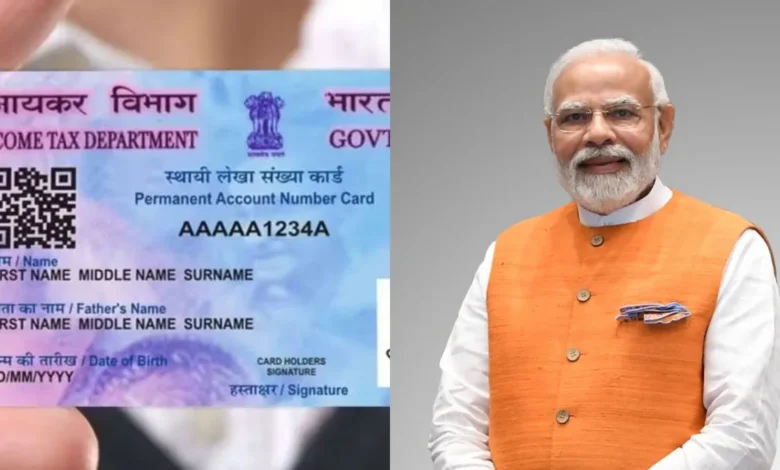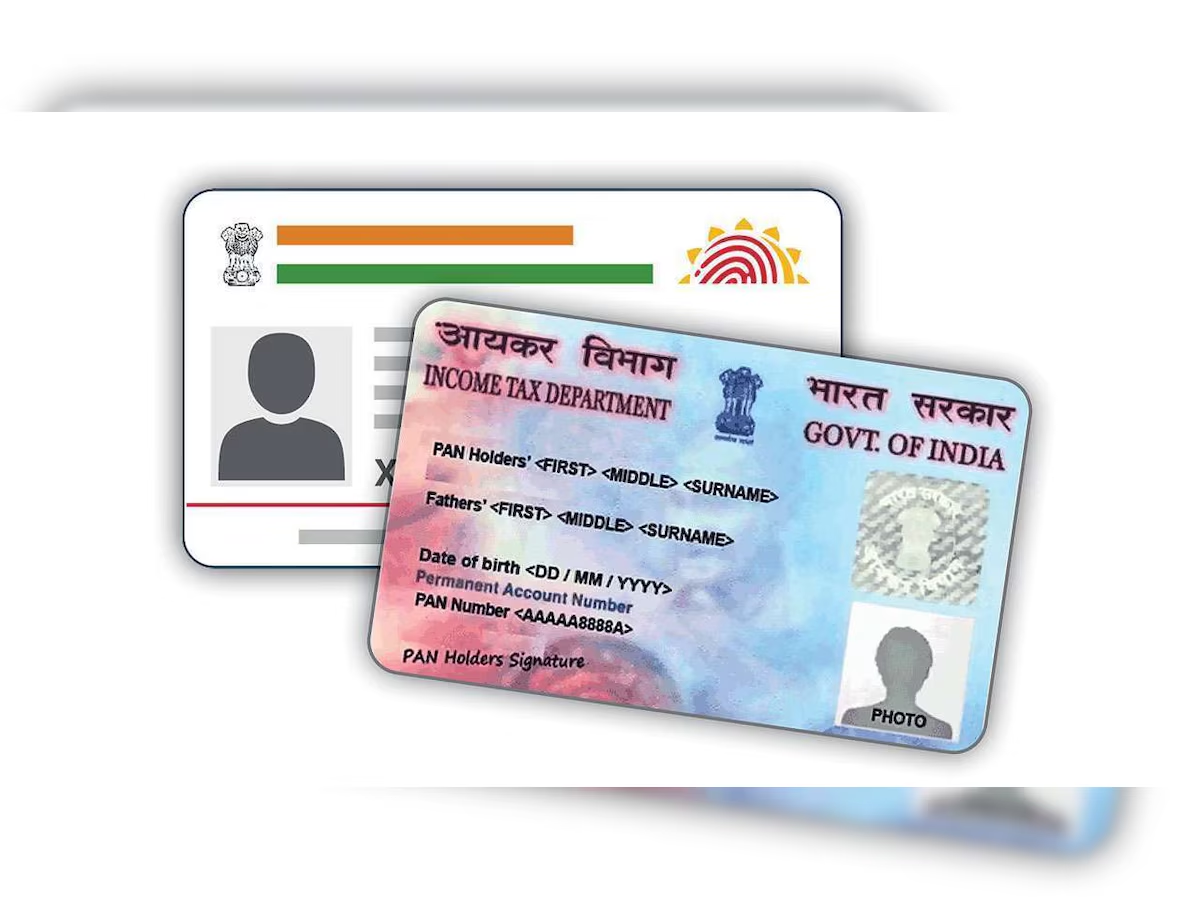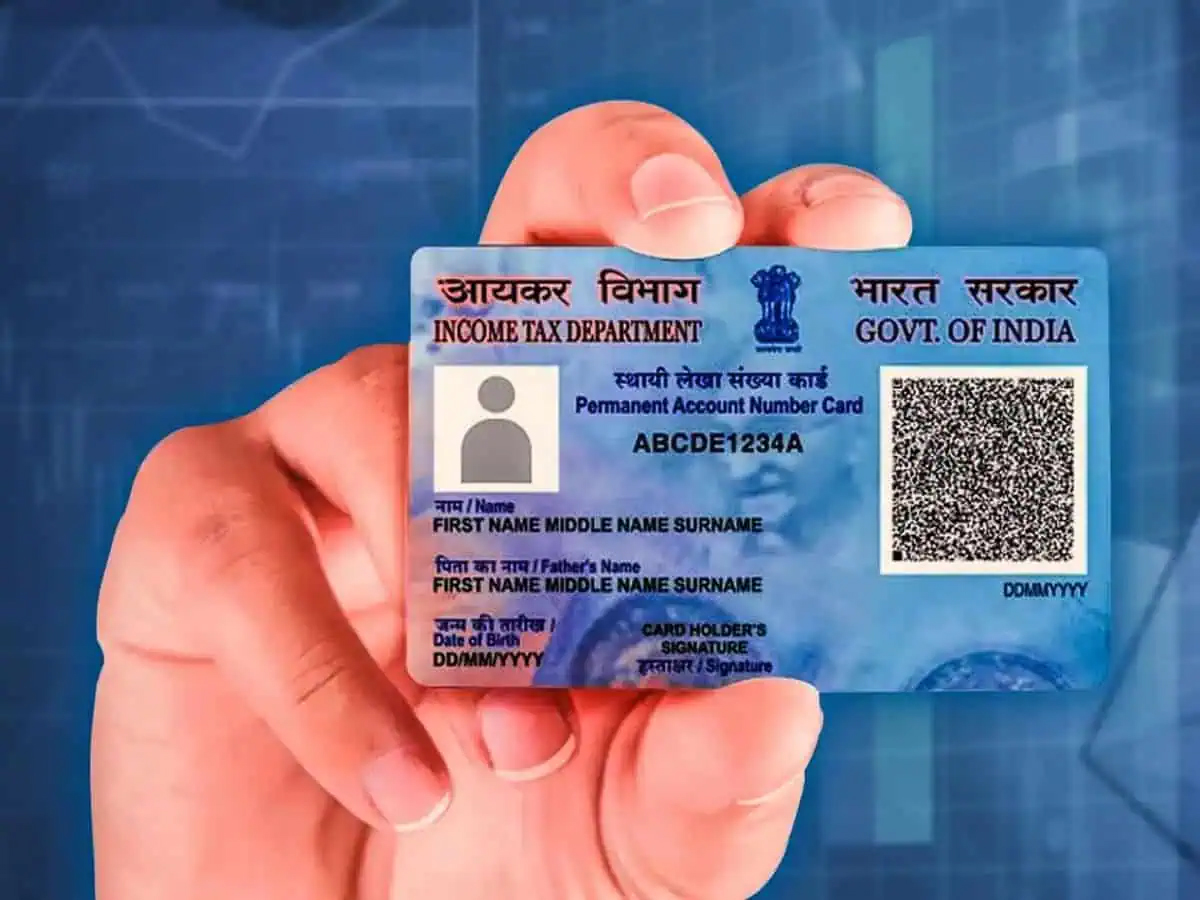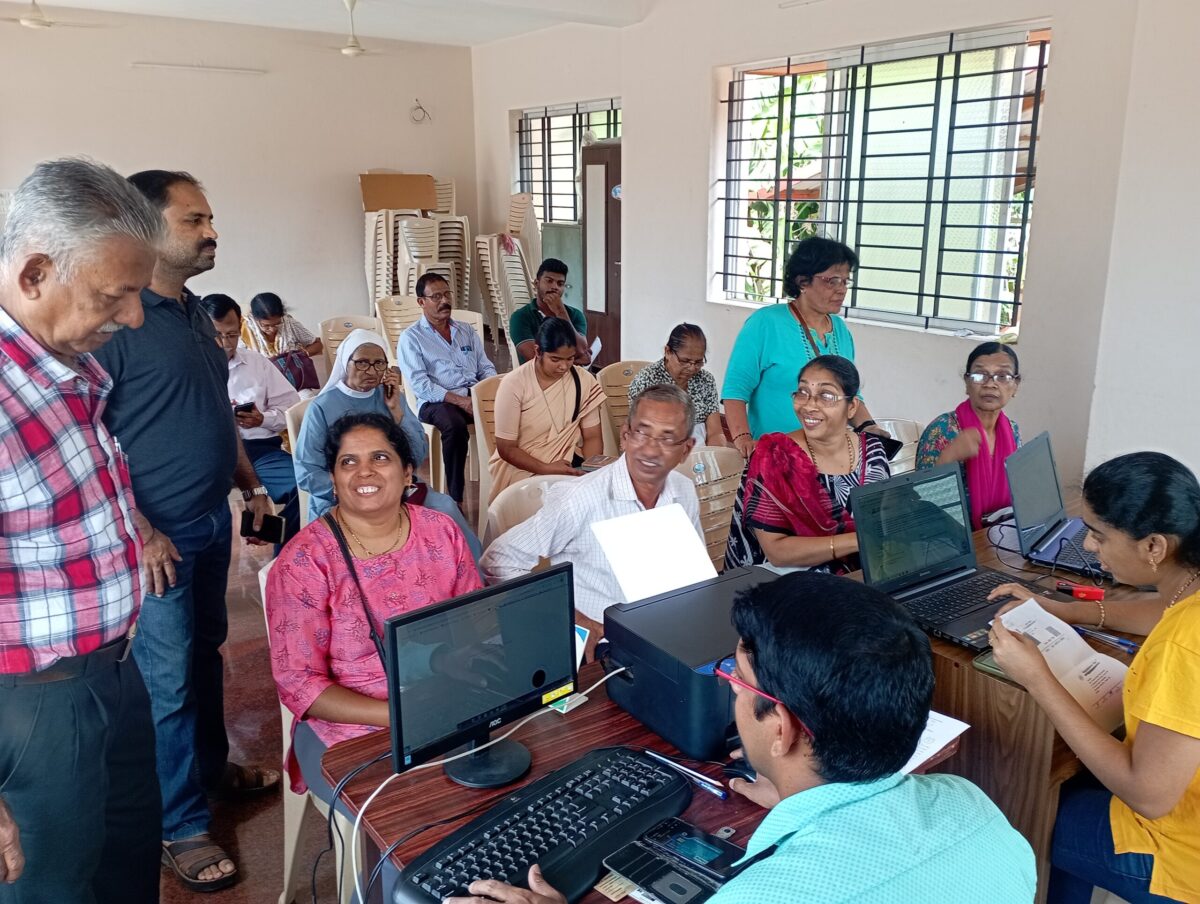PAN 2.0: A Step Towards Disaster Like The Aadhaar Nightmare?
Indian government has introduced PAN 2.0 which will have QR code on the face of it and would be a step towards absolute digitisation. But will the government succeed in implementing it?

India’s fast digital transformation has become one of the most prominent characteristics of the 21st century. It will change how citizens interact with the state in governance, finance, and public services as the nation continues its gradual acceptance of technology. The introduction of PAN 2.0 is the upgrading of the existing Permanent Account Number system, and it is one of the boldest moves toward the modernization of the country’s financial infrastructure and tax systems.
This system, already in a very important role of connecting individuals with financial activities such as tax filings, bank transactions, and dealing in properties, now gets even more features, including QR codes, data integration, and moving forward to paperless processes. According to Union Minister Ashwini Vaishnaw, PAN 2.0 will make administrative processes smoother and faster, more efficient and reduce inefficiencies in government service delivery.
However, India’s experience with large-scale government projects raises valid concerns about whether PAN 2.0 will be an effective leap forward or yet another example of costly, poorly implemented technological ambition. Given the controversial history of Aadhaar a similar government initiative aimed at integrating technology into everyday life there are legitimate fears that PAN 2.0 could end up as a costly disaster.
The major question is: will PAN 2.0 usher in greater efficiency or become another bureaucratic nightmare?
 Existing PAN System: A Glimpse Of The Current Issues
Existing PAN System: A Glimpse Of The Current Issues
The features and benefits of PAN 2.0 need to be understood in the context of the problems it is trying to solve for the new system. It has so far been useful in linking citizens to the financial ecosystem. The 10-digit alphanumeric identifier provides for tax compliance, tracking of sources of income, and transparency in financial dealings. PAN is a must for opening a bank account, filing income-tax returns, and other major financial transactions, including buying property or investing in the stock market.
While it has been good enough to serve its purpose, the existing PAN system is far from perfect. Updating records becomes quite cumbersome, and users find it very difficult to authenticate their identities. When individuals seek to link PAN with other government services or want to verify their identity, technical glitches or long delays are not uncommon. Moreover, the present system does not integrate with other databases, so information regarding an individual is often scattered and siloed.
A remedy to these flaws is introduced through PAN 2.0. It is supposed to streamline the process, allow the updating of data in real time, and integrate it with other government services. This is believed to help get rid of the red tape involved. However, no one can assure you that PAN 2.0 will meet the expectations. Rather, it might bring out fresh complexities that would only deteriorate the current situation.
Technological Ambitions Of PAN 2.0: Progress Or Pitfall?
 PAN 2.0, on the face of it, is a necessary and impressive undertaking. The new system also hints at adding features such as QR codes. One can immediately access data linked to every PAN. This makes verification of identity and transactions easier and faster, hence reducing the time taken to process applications. The paperless process is supposed to save money, reduce paperwork, and help sustain the environment while streamlining citizens’ interaction with government services.
PAN 2.0, on the face of it, is a necessary and impressive undertaking. The new system also hints at adding features such as QR codes. One can immediately access data linked to every PAN. This makes verification of identity and transactions easier and faster, hence reducing the time taken to process applications. The paperless process is supposed to save money, reduce paperwork, and help sustain the environment while streamlining citizens’ interaction with government services.
The integration of multiple identification numbers will form a more coherent and effective identity system, one of the other major objectives. It would bring about consolidation of tax records, financial transactions, and government services through PAN 2.0. Ideally, this redesign should correct many of the shortcomings of the present system by decreasing the paper burden on the citizens and making it easy for businesses to comply with taxes.
However, as is often the case with large-scale technology projects in India, the chasm between the ambitions of the government and the reality of what can be done on the ground is wide. Even though the theoretical advantages of PAN 2.0 are clear, experience with past efforts has shown that big technological rollouts in India have typically faced severe operational problems. Previous attempts by the government to introduce technology in public services, such as Aadhaar, have been marred by logistical problems, systemic inefficiencies, and public resistance. The scale of these projects often makes even minor flaws seem like a huge issue, which then causes delays, cost overruns, and negative public perception.
These challenges could be exacerbated for PAN 2.0. If not executed carefully, the rollout may end up sharing the same fate as Aadhaar: from poor infrastructure to a lack of public awareness to data privacy and security concerns. If it turns out to be a failure in the same way, then it will be an absolute waste of resources instead of a step forward.
The Aadhaar Precedent
If one wants to look at the history of Aadhaar to understand the risks that accompany ambitious projects, the pitfalls of PAN 2.0 will come quite close to those associated with the ambitious project. The latter was announced in 2009, which marked it as a game-changer for how the Indian government could track and authenticate citizens for various services. It was to provide a unique 12-digit identification number for every resident of India. The promises included the following: streamline the delivery of welfare, reduce fraud, and enhance governance.
 In less than three years, Aadhaar turned into the largest biometric database in the world with enrollment exceeding 1.3 billion people. The system captured enormous personal data such as fingerprints, iris scans, and demographic details that all went to a central database. Starting as a voluntary program soon turned into mandatory enrollment for the various services provided such as subsidies, mobile phone registration, and even tax filing.
In less than three years, Aadhaar turned into the largest biometric database in the world with enrollment exceeding 1.3 billion people. The system captured enormous personal data such as fingerprints, iris scans, and demographic details that all went to a central database. Starting as a voluntary program soon turned into mandatory enrollment for the various services provided such as subsidies, mobile phone registration, and even tax filing.
Though initially promising and quite voluminous, Aadhaar is beleaguered with heavy criticism and challenges. Pan 2.0 can successfully avoid all this for good if it minimizes or nullifies the potential vulnerabilities found in Aadhaar related to management at such huge scale and concerns pertaining to the issue of affecting private, safe data, and making more people vulnerable for exclusions.
Digital Exclusion: The Cost Of Technological Overhaul
One of the most important issues with Aadhaar and one that PAN 2.0 must address is digital exclusion. The rollout of Aadhaar faced stiff resistance from marginalized communities, especially rural populations and the elderly, who found it difficult to access the necessary infrastructure to enrol and authenticate their data. Even today, rural residents often find it difficult to link their Aadhaar with bank accounts or access government services, as the process requires access to technology, internet connectivity, and a certain level of digital literacy.
This digital divide was compounded by the fact that many of those who were suffering from Aadhaar were also the ones who would benefit the most from the services provided by the program, including subsidies, healthcare, and educational benefits. Without proper access to digital services, these individuals were being excluded from the very programs that were designed to help them.
 To be effective, PAN 2.0 needs to be designed with inclusivity and accessibility in such a way that all citizens are covered, not only the tech-savvy and those residing in the urban areas. The potential of digitalization of public services is indeed enormous, but the same is at risk of exacerbating the already existing inequalities unless properly implemented with care regarding the needs of marginalized communities.
To be effective, PAN 2.0 needs to be designed with inclusivity and accessibility in such a way that all citizens are covered, not only the tech-savvy and those residing in the urban areas. The potential of digitalization of public services is indeed enormous, but the same is at risk of exacerbating the already existing inequalities unless properly implemented with care regarding the needs of marginalized communities.
Privacy And Data Security Concerns
The area where PAN 2.0 can go wrong is the area of privacy and data security. Developing a massive database certainly centralizes personal data for its efficient transfer and eventual usefulness; but on the other hand, it poses an easier target to cybercriminals. Even the latest available technology of security could not safeguard against occasional data leaks in Aadhaar.
High-profile breaches, such as the sale of Aadhaar data for as little as ₹500, point to the risks of storing sensitive personal information in one place.
Since PAN 2.0 will handle the same kind of sensitive information, such as tax-related data, it is vulnerable to the same threats. If the data security measures are not strong enough, then the system will be an easy target for hackers, and this may lead to severe privacy violations and identity theft. Furthermore, if the government collects and stores too much personal information, then it raises serious concerns about surveillance and potential misuse of that data.
For the success of the project, there must be strict configurations to the citizens’ data on PAN 2.0. This shall involve protocols regarding encryption, multifactor authentication, and audits checking for possible flaws in the system after set time intervals. Neglecting these considerations would make this system a nightmare to the users as opposed to simplifying the administrative process.
Financial And Operational Challenges
One of the biggest risks PAN 2.0 shares with Aadhaar is its cost. While the government says that this new version will be free to existing PAN card holders, the cost of employing this very new system would be pretty expensive. This implies that the government will incur costs for developing and maintaining the technological backbone, setting up national awareness campaigns, and continuing to provide technical support to the users.
Aadhaar, for example, ran into monumental cost overruns. Initial estimates towards the project cost were far exceeded by actual expenses, as costs swelled with increasing scope in the program. Quite like, it is expected that there will be some unexpected challenges, and hence will have to pump in more investments into PAN 2.0 despite initial estimates.
The cost of implementing PAN 2.0 could quickly spiral out of control if the project encounters technical difficulties or delays. With the size of such a project and no clarity on the implementation roadmap at all, there is a reasonable risk that the system built might end up being ineffectual and wasteful. To avoid such outcomes, the government must be transparent as far as budgetary issues and the progress of the project implementation are concerned and ensure scaling up of the system would not involve cost over-runs.
The future of PAN 2.0 is far from certain. The system promises to “streamline administrative processes and improve efficiency, reducing bureaucracy and red tape,” but that comes with the price of important risks to be carefully managed.



